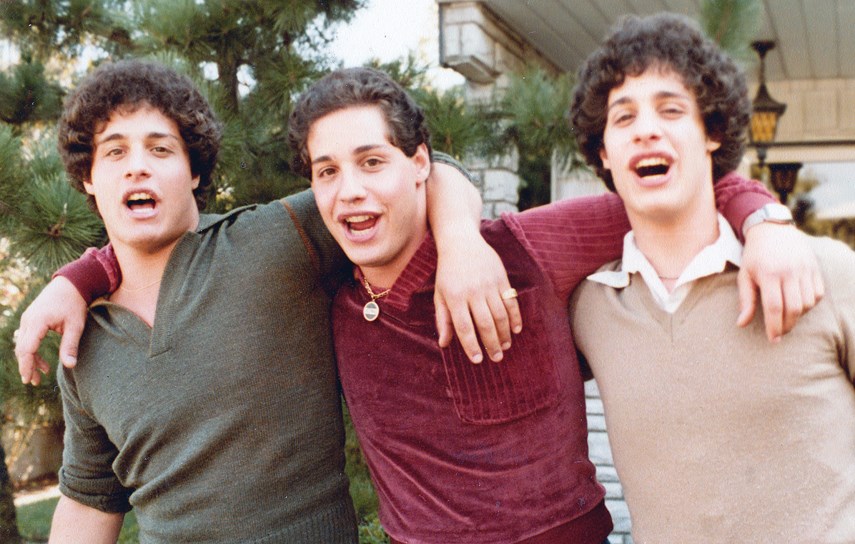Three Identical Strangers. Directed by Tim Wardle. Rating: 8 (out of 10)
In 1980 Robert Shafran went to college and received an odd welcome.
Girls came up to him and kissed him. Strangers high-fived him and clapped him on the back, saying “Welcome back, Eddy.” Bobby tried to tell people they had the wrong guy, but before he had even settled into his dorm room there was a knock on the door. The knocker, a friend of Eddy’s, just stared. His first words: “Were you adopted?”
Director Tim Wardle tells the story through recreations, present-day interviews with his subjects, and plenty of detail. The race to go and meet his look-alike – Eddy Galland – that very first night, for example, is peppered by a description of Bobby’s junky car, a song that was likely playing on the radio, and the speed he was doing when a cop pulled him over (88 in a 50 zone). So much detail, in fact, that we don’t notice that something is wrong about the whole thing.
Three Identical Strangers is the amazing true tale of those two strangers who met, age 19, and discovered that they were brothers. “The door opened, and there I am,” Bobby says. “It was like the world faded away and it was me and Eddy.” The story goes from amazing to staggering after the twins’ story hits the newspaper and David Kellman looks at a photo and sees two versions of himself in print. It wasn’t twins separated at birth: it was triplets. All three brothers lived within 100 miles of each other.
This review should end here, because the less you know going into the film, the better.
Perhaps you know a bit of the story, if you’re old enough to remember the brothers making the rounds on Donahue and The Today Show in matching outfits, delighting audiences with tales about how they smoked the same brand of cigarettes and had the same taste in women. Maybe you read about them partying at Studio 54, or saw them onscreen in Desperately Seeking Susan, in a non-speaking cameo ogling Madonna. The brothers were raised in three different economic environments, with parents who had varied disciplinary styles: they seemed to be walking, talking examples of nature triumphing over nurture.
But while the boys were euphoric, the parents were outraged. None had been told that the baby boy they adopted at six months was a multiple. A meeting arranged at Louise Wise, a prestigious adoption agency which specialized in Jewish families, provided only the thin explanation that three babies were more difficult to place together.
You may know part of the story, but you certainly don’t know all of it; the tale gets stranger and darker with each new revelation. New characters are introduced, like the Austrian Holocaust refugee and the California resident who remembers fondly a kiss from Barack Obama. The narrative happens in reverse: the happy ending, the reunion, opens the film but it’s not a complete picture. Wardle offers up new pieces of information, each more shocking than the next, working backwards to try to get at the heart of why the boys were separated in the first place. (It’s a story that is dramatic in its own right, and the film could have culled a dramatic recreation or two and survived intact.)
Lawrence Wright stumbled on a footnote that would change the story dramatically; the journalist has been looking to solve the mystery ever since. We can see in his interviews that Wright is not at peace with his discovery nor the efforts of a “powerful organization with deep political connections” to block every inquiry.
It’s a story that delights and infuriates. It raises questions about justice and ethics, makes cases on both sides of the nature-versus-nurture argument, and draws parallels between what happened to the boys a few short decades ago and the twins experiments of Josef Mengele.
Today the brothers are haunted grown men, in contrast to the jubilant new family they appeared to be when they first discovered one another. “I have more questions than I have answers,” says David, as the film itself ends with a could-it-be-you question for its audience, and sad archival footage rolls.



